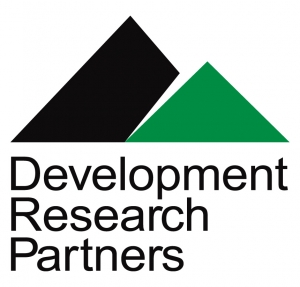Fiscal and Economic Impact Analysis
Development Research Partners provides comprehensive custom analysis and analytical tools to evaluate and forecast site-specific real estate and business activities and government cost and benefit impacts.
Development Research Partners has developed a fiscal and economic impact model for evaluating real estate and economic development projects…SiteStats©. Click here for an overview of SiteStats© and its capabilities.
Recent Projects include:
The Economic and Fiscal Benefits of Development in the Jefferson Parkway Area
October 2017
The Jefferson Parkway is the last 10-mile segment of roadway needed to complete the beltway encompassing the Denver metropolitan area. The project is expected to influence development patterns and business activity along the corridor. Transportation and infrastructure projects have significant economic impacts in local and regional communities and can improve the feasibility of various types of projects and improve regional access. The parkway is projected to impact development patterns based on the timing and types of uses along the corridor. This study estimated the economic and fiscal benefits in Jefferson County of development with and without completion of the Jefferson Parkway over a 20-year period from 2018 to 2037.
The Economic Benefits of Denver Zoo
August 2017
Denver Zoo is a top attraction in Denver, attracting an average of 2 million attendees each year and ranking as the top attraction for visitors to Denver based on paid admissions in 2016. Denver Zoo has become a valuable cultural resource to Denver area residents, providing numerous educational opportunities, events, and research. Denver Zoo is also a major source of economic activity in Denver and the regional economy, employing hundreds of people and fostering local business activity. This study estimated the economic benefits of Denver Zoo to the City and County of Denver and to the larger Scientific and Cultural Facilities District within the metro region.
The Benefits of the Renewable Energy Industry in Eastern Colorado
November 2016
The renewable energy, or cleantech, industry has become an important part of the Colorado economy over the past 15 years. Colorado’s eastern plains have significant resource potential, notably wind energy, and have attracted the vast majority of renewable energy investment activity in the state. This study profiles the renewable energy industry in eastern Colorado, and measures the economic benefits the industry provides in terms of construction, investment, employment, business activity, and property tax revenue.
The Economic Benefits of the Cherry Creek School District
August 2016
The Cherry Creek School District is the fourth largest school district in Colorado, with about 54,700 students in 60 schools, serving residents across seven municipalities in Arapahoe County. The Cherry Creek School District has a significant economic impact in the metro Denver region. The district is one of the largest employers in metro Denver, providing millions of dollars in earnings to its teachers and staff and supporting the business community with its local purchases of goods and services. This study estimates the economic and fiscal benefits the Cherry Creek School District has in metro Denver through its on-going operations and construction activities.
The Economic and Fiscal Benefits of the University of Denver
March 2016
The University of Denver (DU) is the oldest independent university in the Rocky Mountain region, offering students a quality education for over 150 years. DU is home to more than 11,500 students from throughout the U.S. and over 80 other countries, contributing to the education and talent of the state’s workforce. An estimated 70 percent of DU’s graduates stay in Colorado. DU ranked as the second largest non-retail private employer in the City and County of Denver and among the top 20 in the metro Denver region. This report highlights and quantifies the importance of DU to the metro Denver region.
The Economic and Fiscal Benefits of the Port of Muskegon
December 2015
The closure of a large coal-fired power plant in Muskegon, Michigan, along the shores of the largest natural deep-water port in west Michigan, brought together community and regional representatives to plan for future uses and economic opportunities for the port. Development Research Partners helped the community identify the contributions of the port to the local economy as well as estimate the benefits economic development goals could have in the local and regional economies. DRP’s in-depth analysis provided the community with valuable insight into what an improved logistics hub could mean to the area.
Investing in Denver’s Workforce & Economic Future: Benefits of the Denver Scholarship Foundation
May 2015
Development Research Partners partnered with the Pell Institute for the Study of Opportunity in Higher Education to conduct a study of the outcomes and impacts of the Denver Scholarship Foundation (DSF). DSF promotes, assists, and funds Denver Public School students to attend higher education institutions throughout Colorado. Since DSF’s inception in 2006 to spring 2014, 750 Denver Public School students, enabled with DSF assistance and scholarships, have completed a bachelor’s or higher-level degree. This study measures the potential impacts of better educational outcomes and earnings for students in the DSF program.
The Economic and Fiscal Impacts of the Craig Station in Craig, Colorado
March 2015
The Craig Station is the second-largest coal-fired baseload power plant in Colorado. Operated by Tri-State Generation and Transmission Association, Inc., it is located near Craig, Colorado in Moffat County. The Craig Station study analyzes the economic and fiscal benefits of the plant to a three-county region including Moffat, Routt, and Rio Blanco Counties. These counties are linked economically through a shared demand for workforce, infrastructure, and the nature and locations of the power plant’s supplier companies. This tri-county region is also the largest coal source in the state, comprising 50 percent of all the coal produced in Colorado. The detailed analysis of the Craig Station’s impacts included its benefits from on-going operations as well as the plant’s associated transitory worker spending during the plant’s maintenance operations. The study was completed with a regional profile of the area’s economy that included demographics, employment, educational attainment, incomes, and housing stock.

